At a time when much of Europe was still fighting dragons, Tbilisi was already a well-established cosmopolitan Silk Road melting pot of Kurds, Persians, Tatars, Jews, Armenians, Georgians and everybody else. Over the centuries a succession of conquerors would come to vanquish the people and raze the city on the hill but Tbilisi would rise, brush the ashes off itself and set the table.
Today, the country is recovering from 80 years of Soviet domination and 25 years of a tumultuous independence that has included civil war, two separatist conflicts, economic collapse and a Russian invasion. I first arrived here in 2001, during the dark years when the energy ministers got rich selling the country’s power abroad while the rest of us spent winters huddled around candles rubbing our hands together. Meanwhile, local officials would help kidnap businessmen and street cops earned their salaries by shaking down citizens. It was inconceivable to think that in a dozen years this impetuous little city of crime and graft would be one of the safest cities to walk at night in Europe and have a Dunkin Donuts on Freedom Square.
Underneath this modern western veneer, however, is the “Tiflis” of the orient with its obstinate rejection of order and visceral passion for hospitality. A little over one million people live here, none of whom are fond of starting the day early. Most bakers can’t even be bothered to stoke their ovens before 9 a.m., while big name hotels start serving breakfast at a time when hotels in other countries are preparing for lunch. Tbilisi is not a morning city.
My perfect day explores the layers of this ancient multicultural capital by tasting them, and the best way to start is with a late breakfast of khachapuri, Georgia’s notorious cheese pie. It comes in all shapes and sizes, and may not even have any cheese at all, as there are also bean, meat, potato, egg, and mixed pies. The one for today is a boat-shaped dough filled with cheese and finished off with a lightly baked egg yolk and a glorious wad of butter slowly melting away. This heart attack special is a Black Sea favorite called adjaruli, and the best in Tbilisi are made by the Adjarian master Gia Agirba at his joint, Retro, in Sarburtalo, which is about a 5 lari taxi ride (about $2). Taxis in Tbilisi have no meters, which makes it tricky if you don’t speak a local language. Just hold up five fingers, and smile. If he doesn’t agree or says something you don’t understand, don’t worry, there will be a taxi driver soon enough who will say “OK.” Of course, you can also say nothing and give him five when he drops you off, too, which is what I always do.
From here it’s back in a taxi to get a culture fix at the National Gallery on 11, Shota Rustaveli. Keep an eye peeled for the paintings of Niko Pirosmani, Georgia’s famed primitivist painter from the early 20th century. His work, dominated by scenes of feasting and portraits of ordinary folk documents his times, is also full of gutsy sincerity and naive tenderness that says a lot about the national character.

Next stop is the Dezerter’s Bazaar, between Dinamo football stadium and the Central Train Station. Either walk to the Rustaveli metro station and journey on the Soviet-era underground two stops to the train station or stop a taxi and tell the driver “Dezerteris Bazaari.” Again, five lari should cover it.
Named for the deserters from the Czar’s army in the early 20th century who sold their equipment at the site, the bazaar is the city’s main farmer’s market and where many of Tbilisi’s restaurants get their produce. It is a raw, chaotic warren of unprocessed victuals that few tourists see. No other place in Tbilisi provides such an honest microcosm of Georgian reality. Many of the vendors are refugees from Georgia’s separatist wars in the 1990s and have been working these broken sidewalks since they arrived. Others come straight from villages with jalopies packed with cabbage heads, wheels of cheese, or the carcasses of freshly butchered animals. The air is thick with the odor of exhaust fumes, fish and fowl, and the sounds of car honks and shouts of prices per kilo. People argue, joke and haggle, while men with pushcarts plow their way through the rabble. When the new bazaar building replaced the old Soviet one a few years ago, the traders were forced to relocate. Few returned to what is now a cold, soulless warehouse. However, the spirited old charm can be found upstairs in the neighboring brick Central Bazaar building. Here, you can sample honey and razor sharp guda cheese from sheep, the queso fresco-like Imeretian cheese, and Georgia’s answer to mozzarella, sulguni. In the far corner, you’ll find hundreds of churchkhelas (candlestick-shaped sticks of walnuts dipped in thickened grape juice), stacks of tklapi (fruit leather), and preserves.
A trip to the bazaar wouldn’t be complete without knocking back a couple of glasses of plastic barrel vintages with the market riff-raff down behind the central building. This inner sanctum of local vinosity is not easy to find but once you do, it will be impossible to forget. Ask for Lali and try her saperavi, Georgia’s renowned dry red. Forget the white wine; it’s watered down, and by no means drink any of the white lightning she will offer you. This is supposed to be a perfect day and we have eight more hours to go.
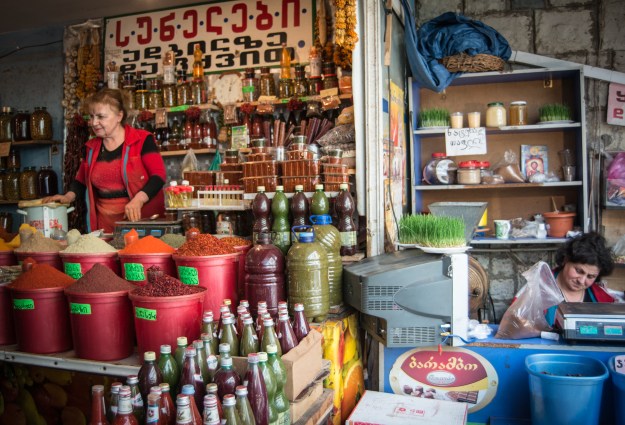
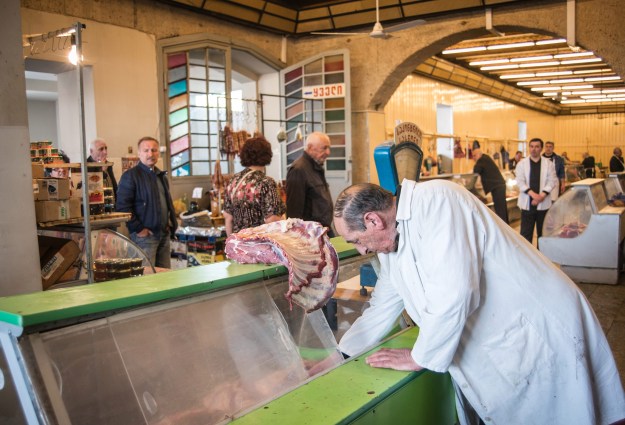
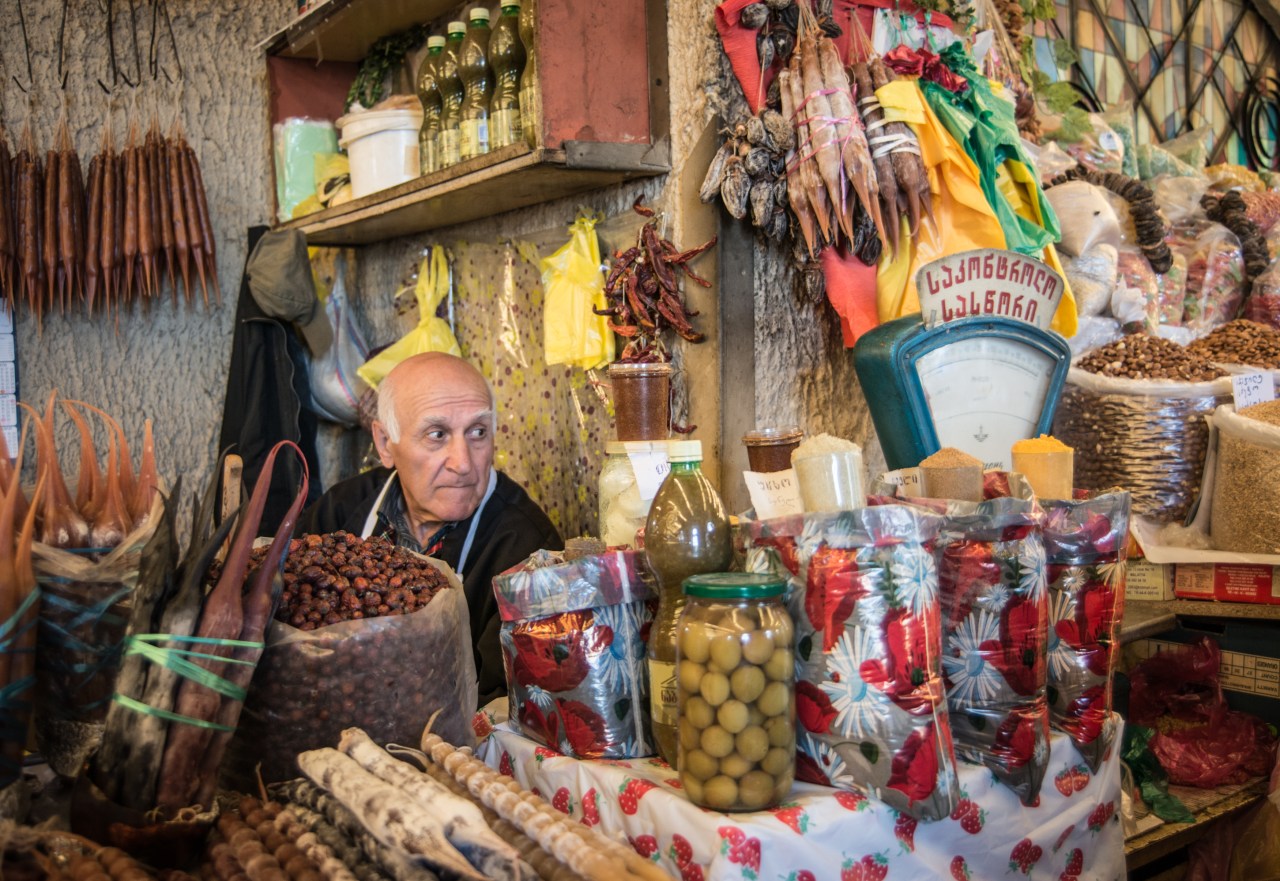
Flag another taxi and ask him to take you to Mshrali Khidi, the Dry Bridge flea market. Open seven days a week, you will find everything here from television tubes and hand-cranked phonographs to Soviet memorabilia and switchblades. On weekends, the park under the bridge is full of paintings and ethnographic craftwork, like sheepskin hats, ceramics and drinking horns. Most of the traders speak enough English to scam foreigners, so haggle away.

Follow your nose under the bridge because it’s lunchtime and you are going to Zakhar Zakharich for the best khinkali in Tbilisi.
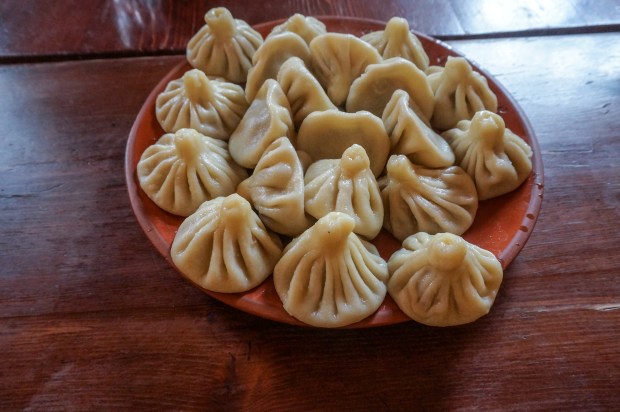
These boiled dumplings are the most iconic dish in Georgia. A high Caucasus recipe, the grenade-sized bites are typically stuffed with a mix of pork and beef and often infused with herbs. Everybody has their favorite khinkali joint, but Zakharich is one of the few places that makes the dough entirely by hand in true mountain style. Because a typical restaurant may serve thousands of khinkali in a day, the temptation to cut back and save time is too great. Zakharich, however, only uses fresh meat delivered daily and offers a variety of fillings, including mutton, which is rare in the lowlands of the capital. You will also want to try the mushroom and tarragon, the chopped beef, the potato, and the cottage cheese. Remember, this is finger food. Using a knife and fork is not only a social faux pas, but will leave an embarrassing mess on your plate too. First, bite off a little hole and watch the steam rise for a moment before slurping down the tasty broth. Then, gobble everything down but the knot, which helps you keep track of how many you have eaten.
The menu will entice you with many other delectables but khinkali-eating is a ritual that you do not want to profane with other food. The only thing you need to order with khinkali is beer and, if you wish, chacha, which is like Italian grappa. Zakhar Zakharich’s chacha is homemade, from their own vineyards in Kakheti.

You are going to need to walk the dumplings off, so make your way across the Dry Bridge, up to Rustaveli and back to Freedom Square. If you need a caffeine boost, there are several cafes on Tabidze Street, the semi-pedestrian lane behind the old City Hall, but the real goal is Vino Underground to sample Georgia’s 8,000-year-old winemaking legacy. Tbilisi’s best wine bar is owned by a collective of seven “natural” winemakers who sell about 100 family-produced vintages made the traditional way in qvevris—huge terracotta vessels buried in the ground and found in nearly every basement in east Georgia’s wine region of Kakheti. This is not bazaar wine. The co-op is more grape cultivator than winemaker, they say, tending the vines to help them develop resilient immune systems naturally without chemical fertilizers. When the grapes get to the cellar nothing is added to help the fermentation process. The bar’s savvy staff will pour and explain the idiosyncrasies of each wine.
When you climb out of the cellar, you will find yourself in Tbilisi’s boho neighborhood of Sololaki, built in the 19th and early 20th centuries by Georgian and European architects. Make your way to the Betlemi Street area in Old Town and hike along the impossibly steep, narrow streets to explore one of the oldest neighborhoods in the city. Although it has been recently renovated, the district is distinctly Tbilisian in architecture, with its wooden and iron balconies and secluded courtyards. Take in the ancient churches, the old Zoroastrian temple and the little cafes tucked away in the crooked alleys.
Visit OAT Gallery 144 Stairs, located underneath the 16th-century walls of the Narikala Fortress. It is a bit of an effort to climb the 144 stairs, but the sweeping view of the city from the generous terrace is worth it. Try the west Georgian delicacy gebzhalia, an exhilarating lactose-rich rush of sulguni cheese rolls swimming in a minty bath of sour cream and cottage cheese. Owner Rusiko Oat’s gupta lobio is also a must. Red beans mashed with herbs and spices and served in a sauce of walnuts, garlic, green onion, and ground marigold is superb comfort-food.

Down the stairs to the bottom of the hill is Meidan, or Old Town. Avoid the touristy Shardeni Street pedestrian area, and instead walk a hundred yards to Abanotubani, the sulfur bath district and soak your bones and relax with a scrub and massage in one of the old dome-shaped bath houses. Legend has it that this is where Tbilisi was founded in the 5th century when King Vakhtang went pheasant hunting with his falcon and discovered both birds poaching in a hot spring. Excavations, however, have revealed that people have been soaking in the waters since several hundred years before Christ. Two of the most famous bathers were Alexander Dumas and Alexander Pushkin, who no doubt used the magical waters to help recover from the excesses of previous nights. The family-operated Gulo Thermal Spa is the place to go for its cleanliness and comfort.
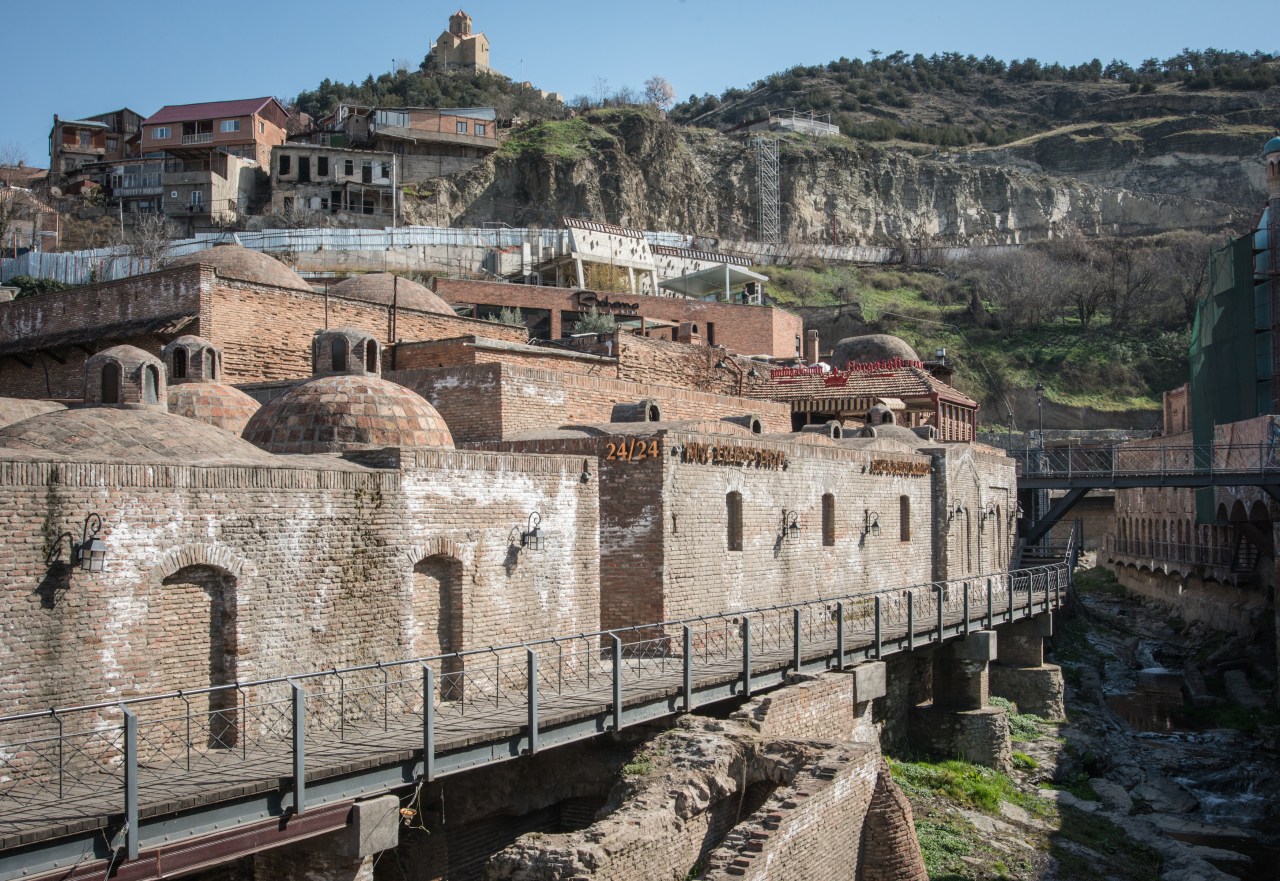
An hour-long soak will trigger an appetite. Luckily, one of Tbilisi’s best restaurants is a few steps away. Khasheria is the latest venture of celebrated local chef Tekuna Gachechiladze, who studied culinary arts in New York City and returned home where she has elaborated on traditional fare to create the most mind-blowing Georgian food today. Because the sulfur baths are associated with alcohol-related conditions the concept here is hangover cure, as the restaurant gets its name from the tripe soup remedy, khashi. Baked brains, bone marrow, pork sausage on chestnut polenta, and the hummus-like eggplant pkhali will all leave an indelible impact on your palate.
An hour-long soak will trigger an appetite. Luckily, one of Tbilisi’s best restaurants is a few steps away. Khasheria is the latest venture of celebrated local chef Tekuna Gachechiladze, who studied culinary arts in New York City and returned home where she has elaborated on traditional fare to create the most mind-blowing Georgian food today. Because the sulfur baths are associated with alcohol-related conditions the concept here is hangover cure, as the restaurant gets its name from the tripe soup remedy, khashi. Baked brains, bone marrow, pork sausage on chestnut polenta, and the hummus-like eggplant pkhali will all leave an indelible impact on your palate.
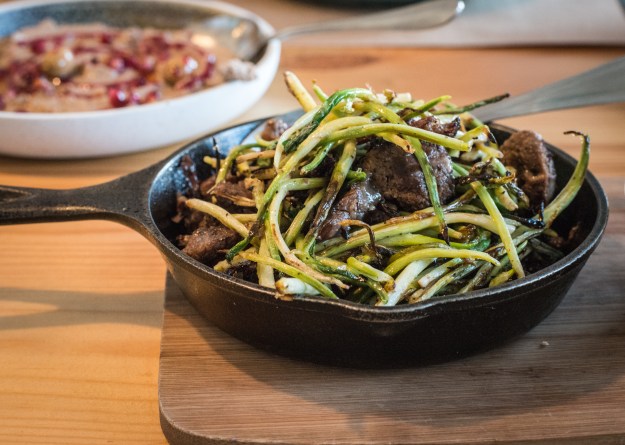
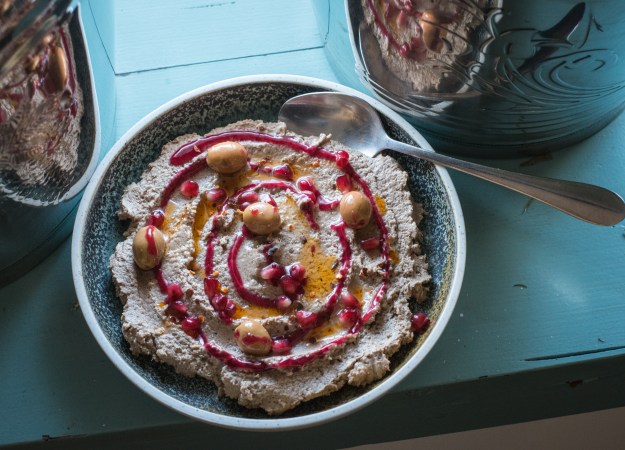
In the past dozen years, Tbilisi’s nightlife has grown from a handful of Irish-type pubs to having one of the best dance club scenes in eastern Europe. Mtkvarze and Bassiani are two outstanding electronic music clubs. I would have to check who is playing at Zazanova near the Opera House or Backstage 76 inside Vake Park—two premier live music venues—before going there. I might do a pub crawl on Akhvlediani Street near the Radisson Hotel or have a nightcap at The Black Dog Bar in Sololaki. My perfect day might stretch into the wee hours in the sleazy underbelly of Tbilisi, down in fetid lair below the Radisson, with its strip clubs and bawdy discos that open after midnight.
Don’t be surprised if this day takes an unexpected detour. Tbilisi is one of the most unpredictable cities in the world and its inhabitants passionate and impulsive. The plan may have been to go to the bazaar, yet you have somehow ended up in a neighboring village sitting at a table overflowing with food. A simple lunch may turn into a feasting marathon with newly-made “friends for life” from a nearby table. It is a universal constant that the more open you are, the further a city embraces you. The difference with Tbilisi is that it doesn’t let go.